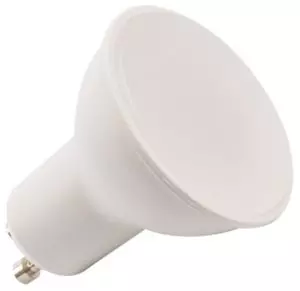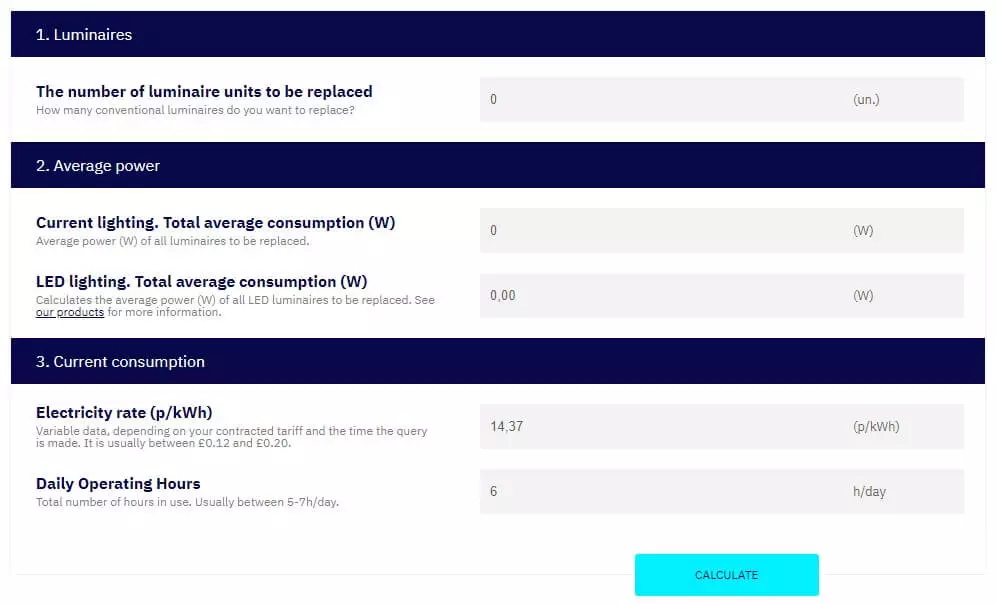If we decide to change the halogens for LEDs, we are faced with several dilemmas: Do we only change the bulb or the entire fitting? If we decide to change just the bulbs, is it better to continue using G5.3 or MR16 bulbs or switch to GU10 bulbs? In this case, we will discuss the options we have when we are going to replace just the bulbs.
Why replace halogens with LEDs?
Since September 1, 2018, the manufacture of halogen bulbs has been banned in the European Union and once the current stock of bulbs is exhausted, bulbs of this type, which have been so popular in recent years, will no longer be available for sale. The time has come to find an alternative and the most beneficial of them is LED lighting.
LED lighting is very efficient and does not contain chemicals such as mercury, which is very present in low-consumption fluorescent bulbs. If we decide to change the halogens for LED while keeping the lamp we have two options: MR16 and GU10 bulbs.
How to replace halogens with LEDs
Changing our old halogen bulbs for LED is very easy. In general, there can be two cases: the current bulbs work at 12V dc (direct current) or at 220V ac (alternating current).
In the first case we can:
- Directly replace the 12V halogen bulbs with LED bulbs that also work at 12V dc.
- Remove the ballast or transformer, in addition to the current bulb, and install bulbs that operate at 220V ac.
In the second case it would be enough just to replace the bulbs.
Changing halogen bulbs to MR16 LEDs
The replacement process is as simple as removing one bulb and putting in the other. But like most easy solutions, it has more drawbacks than advantages.
Keeping 12V transformers is not recommended when replacing halogen with LED bulbs.
We still depend on the transformer and this consumes energy, generates heat and a slight sound that over time gets louder, becoming very annoying. At the same time, as the load of the MR16 LEDs is much lower than that of halogens, the new bulbs may not work properly.
Replace halogens with LED GU10 bulbs
In this case the change requires a little more work. We have to remove the transformers, replace the lampholders and place the new energy saving GU10 bulbs. In this way, we optimize the consumption of the installation to the maximum, completely eliminate the buzzing and ensure that the new lighting works perfectly.
It should be noted that if we choose the latter option, we will have a wider range of bulbs available. This will allow us to select the light that best suits our needs.

Replace linear halogen bulb with LED
If what we are looking to update is the typical linear bulbs, very common for example in floor lamps, such as R7S, we have to look at the length of the bulbs. Unless we also replace the lampholder (if the lamp allows it) we can only install bulbs of the same length as the current ones.
How much can be saved by replacing halogen with LED lights?
If we take into account the difference in consumption of halogens and their transformer in comparison to LEDs, the change is already very profitable. Let’s take for example a room with four halogens, the typical ones of 50W, installed. In this case the consumption of the bulb-transformer set is about 65W which means 260W in total. We can change these halogens for 7W GU10 LEDs, which will have a similar performance, and reduce the consumption to 28W.
By replacing four 50W halogen bulbs with 7W LED bulbs, we recover the investment in less than 100 days.
If the price per kW is of £0.15 and the lights are on for 8 hours per day, the annual saving is around £75 excluding the transformer, if we take it into account, the annual saving is up to £100 per year. You can make the calculation using the energy savings calculator on our website. Moreover, if we consider that the four bulbs represent a very small cost, we recover the investment before the first four months.

If the economic incentive is not enough, consider that by eliminating the transformer we get rid of the annoying buzzing that they produce and that can be very stressful. Finally, it is interesting to note that having LED lights in summer, especially in hot areas, is highly recommended because as they emit little heat they will make the summer period more bearable.
There are no more excuses for overpaying on your electricity bill. Start benefiting from quality, efficient, environmentally friendly and noise-free lighting.


